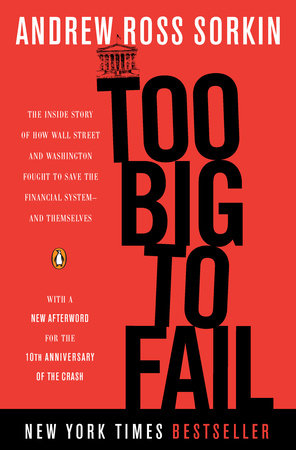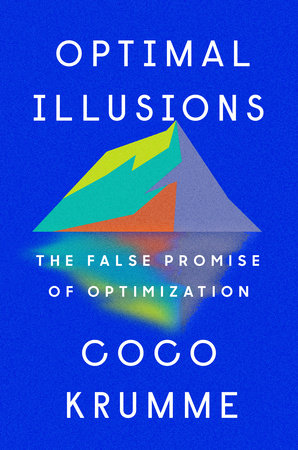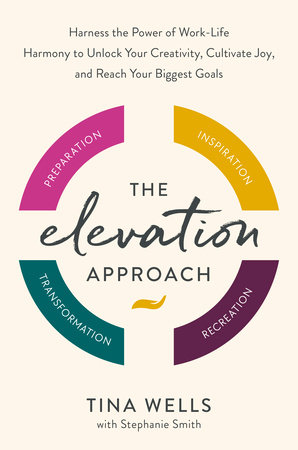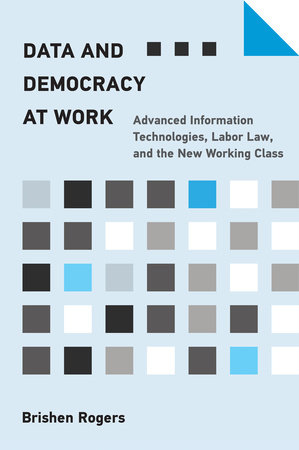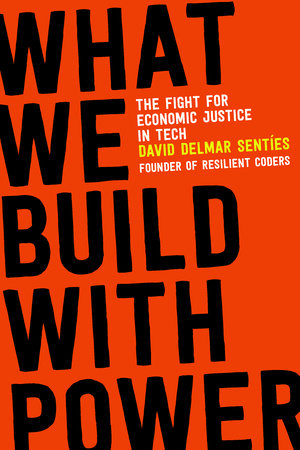Quick Summary
One Sentence Summary:
“Too Big to Fail” by Andrew Ross Sorkin offers a gripping, behind-the-scenes look at the 2008 financial crisis, focusing on the key players and decisions that shaped this defining moment in global economics.
Big Idea:
The book delves into the complexities and high-stakes decisions that surrounded the 2008 financial meltdown, highlighting the interconnectedness of major financial institutions and the systemic risks they posed, leading to the idea that some entities are simply “too big to fail.”
Five Key Ideas:
- The Role of Major Financial Institutions: Examines the part played by banks like Lehman Brothers, Merrill Lynch, and others in the crisis.
- Government Intervention: Discusses the controversial government actions, including bailouts and policy decisions.
- Personalities and Egos: Highlights the influence of key figures like Henry Paulson, Ben Bernanke, and others, showing how their decisions and conflicts impacted the crisis.
- Systemic Risk and Regulatory Failure: Explores how systemic risks went unnoticed and the failure of regulatory frameworks.
- The Ripple Effect: Details how the collapse affected the global economy, from Wall Street to Main Street.
Actionable Advice:
Understand the importance of risk management and the need for effective regulatory frameworks to prevent future financial crises.
About the Author:
Andrew Ross Sorkin is a financial journalist and author, known for his in-depth reporting and analysis of economic issues. He is also a co-anchor of CNBC’s Squawk Box and a columnist for The New York Times.
Read Next:
- “The Big Short” by Michael Lewis: For another perspective on the financial crisis, focusing on those who bet against the housing market.
- “Liar’s Poker” by Michael Lewis: Offers insight into the culture of Wall Street in the 1980s.
- “When Genius Failed” by Roger Lowenstein: Explores the collapse of Long-Term Capital Management and its implications.
- “The Quants” by Scott Patterson: Looks at the role of quantitative analysts in the financial markets.
- “House of Cards” by William D. Cohan: Provides an in-depth look at the fall of Bear Stearns.
In Depth
The Role of Major Financial Institutions
“Too Big to Fail” paints a vivid picture of the part major financial institutions played in the 2008 financial crisis. At the heart of the meltdown were banks like Lehman Brothers, Merrill Lynch, and AIG. These institutions, once seen as pillars of the financial world, became symbols of the crisis.
Lehman Brothers is a key example. Its collapse in September 2008 is often cited as a critical point in the crisis. Sorkin delves deep into Lehman’s fall, describing how its heavy investment in subprime mortgages backfired disastrously. Lehman’s aggressive risk-taking, a culture of short-term gains, and lack of oversight led to its downfall.
Sorkin quotes Lehman’s CEO, Richard Fuld, in a moment of crisis:
“We have to do something. It’s about our survival.”
This quote captures the desperation at Lehman’s highest levels as they faced an inevitable collapse.
The book also highlights Merrill Lynch’s hurried sale to Bank of America. This move, driven by fears of a Lehman-like collapse, shows how panic spread among these institutions. Merrill Lynch, once a giant in the banking sector, found itself in a dire situation due to exposure to bad mortgages and complex financial products that few truly understood.
AIG’s story is another critical piece. The insurance giant’s fall was precipitated by its massive sales of credit default swaps. These essentially unregulated insurance contracts for securities tied to the housing market became toxic as the market collapsed. AIG’s bailout by the U.S. government was one of the most controversial aspects of the crisis.
Sorkin doesn’t just recount these events; he provides context. He shows how these institutions were interconnected. The fall of one had a domino effect, impacting others. Their sheer size and global reach meant that their problems were not just national issues but global crises.
In these narratives, a common thread emerges: the lack of foresight and adequate risk management. The pursuit of profit overshadowed the need for stability and safety. Sorkin emphasizes this, showing how these venerable institutions, driven by short-term gains, made decisions that would have long-term catastrophic impacts.
In essence, “Too Big to Fail” serves as a stark reminder of the repercussions when major financial institutions neglect the balance between innovation, profit, and stability. The stories of Lehman Brothers, Merrill Lynch, and AIG illustrate the consequences of excessive risk-taking and the importance of prudent management in the banking sector.
Government Intervention
The 2008 financial crisis prompted unprecedented government intervention. “Too Big to Fail” sheds light on the critical decisions made by the U.S. government to prevent a total economic collapse. From bailouts to policy shifts, these actions sparked debates that continue to this day.
A standout example is the bailout of AIG. The insurance giant was on the brink of failure due to its exposure to risky financial products. The U.S. government stepped in with a staggering $85 billion rescue package. Sorkin captures the gravity of the moment, quoting then-Treasury Secretary Henry Paulson:
“We’re doing this to save the system.”
This quote reflects the high-stakes environment in which these decisions were made.
The controversy wasn’t just about the amount of money. It was about the principle. Critics argued that bailing out companies like AIG set a dangerous precedent. It suggested that some institutions could take enormous risks, knowing the government might save them if things went south.
Another critical intervention was the Troubled Asset Relief Program (TARP). This program aimed to purchase toxic assets from struggling banks to stabilize the financial system. Sorkin delves into the complexities of implementing TARP, highlighting the challenges faced by policymakers in uncharted waters.
The Federal Reserve also played a crucial role. Its decision to lower interest rates to near-zero was a bold move aimed at stimulating the economy. This, combined with the Fed’s unconventional measures like quantitative easing, showed how traditional policy tools were insufficient to tackle the crisis.
Sorkin doesn’t just list these interventions. He provides context and analysis. He shows how these decisions were hotly debated, often made in a hurry, and sometimes based on incomplete information. The book illustrates the tension between saving the financial system and the moral hazard of rescuing those deemed responsible for the crisis.
The government’s role in the crisis, as depicted in “Too Big to Fail,” was a tightrope walk between preventing economic disaster and promoting financial responsibility. The interventions were seen as necessary evils, steps taken to avoid a greater catastrophe, even as they sparked debates about fairness, accountability, and the role of government in the economy.
In summary, the government’s intervention during the 2008 financial crisis, as outlined by Sorkin, was a series of complex, controversial decisions. These actions, including the bailouts of major institutions and the implementation of unconventional monetary policies, were pivotal in stabilizing the financial system but also raised questions about moral hazard and the proper scope of governmental involvement in the economy.
Personalities and Egos
In “Too Big to Fail,” the 2008 financial crisis isn’t just a tale of institutions and policies; it’s a drama driven by powerful personalities and egos. Andrew Ross Sorkin brings to life the human element, focusing on key figures whose decisions had monumental impacts.
One such figure is Lehman Brothers’ CEO, Richard Fuld. Fuld’s character is a study in complexity: aggressive, proud, and often unable to see the writing on the wall. As Lehman spiraled towards collapse, Fuld’s refusal to acknowledge the severity of the situation played a role in the bank’s demise. Sorkin captures this with a poignant quote from Fuld:
“They are trying to destroy me.”
This line reflects Fuld’s perspective of being under siege, highlighting his combative nature and inability to adapt to the crisis.
Then there’s Treasury Secretary Henry Paulson. A former Wall Street titan himself, Paulson was at the center of the government’s response to the crisis. His actions and decisions, sometimes made under extreme pressure, were crucial. Sorkin illustrates Paulson’s predicament, torn between his Wall Street past and his government responsibilities.
Federal Reserve Chairman Ben Bernanke is another key personality. A scholar of the Great Depression, Bernanke’s understanding of historical financial crises informed his approach. His push for aggressive intervention was based on a deep fear of repeating past mistakes. Sorkin depicts Bernanke as a steady hand, often providing a counterbalance to the chaos.
Jamie Dimon, CEO of JPMorgan Chase, is portrayed as pragmatic and decisive. His bank’s acquisition of Bear Stearns, facilitated by the government, is a pivotal moment in the crisis. Sorkin shows Dimon as a shrewd negotiator, understanding both the risks and the opportunities the crisis presented.
The egos and personalities didn’t just shape decisions; they often complicated them. Sorkin describes tense meetings, clashes of opinion, and the struggle to find common ground among these titanic figures. Their personal beliefs, backgrounds, and experiences influenced how they interpreted and responded to the unfolding crisis.
These narratives of individual leaders in “Too Big to Fail” underscore a crucial aspect of the crisis: it wasn’t just a failure of systems, but also a failure of leadership in many cases. The mix of arrogance, denial, and fear among these leaders contributed to the severity of the situation. Their personal dynamics, rivalries, and conflicts played out on a global stage, affecting millions.
In conclusion, the key idea of personalities and egos in “Too Big to Fail” highlights the significant impact of individual leaders during the financial crisis. The complex characters of Richard Fuld, Henry Paulson, Ben Bernanke, and Jamie Dimon, among others, illustrate how personal traits, decisions, and interactions influenced the course of events. Their stories reveal the human side of the crisis, marked by a blend of ambition, fear, and the struggle to navigate one of the most challenging periods in financial history.
Systemic Risk and Regulatory Failure
“Too Big to Fail” delves into the crucial theme of systemic risk and regulatory failure that underpinned the 2008 financial crisis. The book reveals how a complex web of interconnectedness among financial institutions, combined with inadequate regulatory oversight, set the stage for disaster.
A striking example of systemic risk is the collapse of Lehman Brothers. Its failure wasn’t just a single company’s demise; it sent shockwaves through the global financial system. Sorkin describes how Lehman’s intricate ties with other institutions magnified the impact of its collapse. He captures the essence of systemic risk with a quote from a senior Lehman executive:
“We’re not just talking about Lehman. It’s the entire system at risk.”
This statement underscores the interconnectedness of financial entities and the domino effect that can occur.
The book also highlights the role of complex financial products like mortgage-backed securities and credit default swaps. These products, often poorly understood even by those trading them, multiplied the risks and spread them throughout the financial system.
Regulatory failure is another critical aspect. Sorkin details how regulatory bodies and frameworks were ill-equipped to deal with the innovations in the financial sector. The lack of oversight over investment banks and insurance companies, and the failure to understand the risks posed by new financial products, contributed significantly to the crisis.
The book points out the gaps in regulation, especially regarding the shadow banking system – the array of non-bank financial institutions that played a significant role in the crisis. This sector operated with little oversight, taking on excessive risk and contributing to the instability of the financial system.
“Too Big to Fail” also discusses the issue of moral hazard. The notion that some institutions were considered too important to fail led to risky behaviors, with the belief that the government would step in if things went wrong. This was particularly evident in the cases of AIG and Lehman Brothers.
In summary, the key idea of systemic risk and regulatory failure in “Too Big to Fail” sheds light on the complex and interconnected nature of the financial crisis. The book illustrates how the intertwining of financial institutions, coupled with a lack of effective oversight, created a precarious situation. The example of Lehman Brothers’ collapse and the quote from a senior executive highlight the gravity of systemic risk and its implications. The narrative underscores the need for robust regulatory frameworks to prevent such crises in the future.
The Impact on Main Street
“Too Big to Fail” doesn’t just focus on Wall Street; it also addresses how the financial crisis deeply affected Main Street – the everyday people and businesses across America. Andrew Ross Sorkin highlights the far-reaching consequences of the crisis, painting a vivid picture of its impact on the broader economy and society.
A poignant example from the book is the crisis’s effect on the housing market. Millions of Americans faced foreclosure as the housing bubble burst. Sorkin tells the story of a family losing their home, a direct result of the subprime mortgage crisis. This example illustrates the human cost of complex financial dealings. A quote from a town meeting captures the despair:
“We did everything right, and now we’re losing our home. How did this happen?”
This quote conveys the confusion and helplessness felt by many Americans.
The book also discusses job losses. As financial institutions collapsed and businesses contracted, unemployment soared. Sorkin presents statistics and personal stories that bring these numbers to life. The loss of jobs wasn’t just a statistic; it represented families struggling to make ends meet, a wave of personal crises across the nation.
Another aspect is the erosion of public trust. The bailouts of big banks and financial institutions, while deemed necessary, led to widespread public anger. Sorkin quotes a protester:
“Bailouts for banks, nothing for us!”
This sentiment reflects the perception that the government was more concerned with Wall Street than with average citizens.
Sorkin also touches on the long-term effects on the economy. The crisis led to a significant slowdown, with businesses scaling back investments and consumers reducing spending. The ripple effects were felt in almost every sector, from manufacturing to retail.
“Too Big to Fail” emphasizes that the financial crisis wasn’t just about numbers and institutions; it was about people. The stories of lost homes, jobs, and trust illustrate the profound impact the crisis had on the daily lives of millions. The book serves as a reminder that financial policies and practices have real-world consequences, often affecting those who are least prepared to handle them.
In summary, the key idea of the impact on Main Street in “Too Big to Fail” sheds light on the devastating consequences of the financial crisis on everyday people and the broader economy. The example of a family losing their home and the quote from a town meeting underscore the personal toll of the crisis. The narrative extends beyond Wall Street, capturing the job losses, eroded public trust, and long-term economic effects that touched the lives of millions, highlighting the human dimension of the financial turmoil.
Actionable Advice
- Stay Informed: Regularly monitor economic and financial news. Understanding market trends helps in making informed decisions.
- Diversify Investments: Spread investments across different asset classes to mitigate risks.
- Build an Emergency Fund: Have savings for unexpected financial downturns or personal emergencies.
- Avoid Excessive Debt: Keep debts manageable. Excessive borrowing can lead to financial distress.
- Understand Financial Products: Before investing, understand the risks and workings of financial products.
- Plan for Long-Term: Focus on long-term financial goals rather than short-term market fluctuations.
- Seek Professional Advice: Consult financial advisors for guidance, especially for complex investments.
- Advocate for Transparency: Support policies that promote transparency and accountability in financial institutions.
- Learn from History: Study past financial crises to recognize warning signs and prevent personal financial disasters.
- Practice Ethical Investing: Consider the ethical implications of investment choices and support responsible business practices.
About the Author
Andrew Ross Sorkin is a prominent American journalist and author, born on February 19, 1977. He’s well-known for his in-depth financial reporting and is a co-anchor of CNBC’s “Squawk Box.” Sorkin’s work primarily focuses on Wall Street and corporate America. He founded DealBook, a financial news service published by The New York Times. Sorkin’s insightful analysis of financial markets has earned him numerous accolades, including a Gerald Loeb Award. His best-selling book, “Too Big to Fail,” delves into the 2008 financial crisis, showcasing his knack for turning complex economic issues into engaging narratives. Sorkin is a proponent of responsible journalism, often emphasizing the importance of accuracy and depth in reporting. He advocates for a balanced understanding of the financial industry, recognizing its complexities and impacts. His work reflects a belief in the power of informed, ethical journalism to influence public discourse and policy.
Read These Next
You might like these similar books
- “The Big Short: Inside the Doomsday Machine” by Michael Lewis
- “The Greatest Trade Ever: The Behind-the-Scenes Story of How John Paulson Defied Wall Street and Made Financial History” by Gregory Zuckerman
- “On the Brink: Inside the Race to Stop the Collapse of the Global Financial System” by Henry M. Paulson Jr.
- “House of Cards: A Tale of Hubris and Wretched Excess on Wall Street” by William D. Cohan
- “Liar’s Poker” by Michael Lewis
FAQ
Q: What is “Too Big to Fail” about?
A: It’s about the 2008 financial crisis, focusing on the key events and players involved.
Q: Who wrote “Too Big to Fail”?
A: Andrew Ross Sorkin, an American journalist and author.
Q: Is “Too Big to Fail” based on real events?
A: Yes, it’s a detailed account of real events during the 2008 financial crisis.
Q: Does the book offer a solution to financial crises?
A: It doesn’t offer a specific solution, but provides insights that can help understand such crises.
Q: Who should read “Too Big to Fail”?
A: Anyone interested in finance, economics, or understanding the 2008 crisis.
Q: Is the book technical or easy to understand for non-experts?
A: It’s written in an accessible style, suitable for both experts and non-experts.
Q: How long is “Too Big to Fail”?
A: It’s a detailed book, running over 600 pages.
Q: Has “Too Big to Fail” won any awards?
A: Yes, it’s received critical acclaim and won the Gerald Loeb Award.

